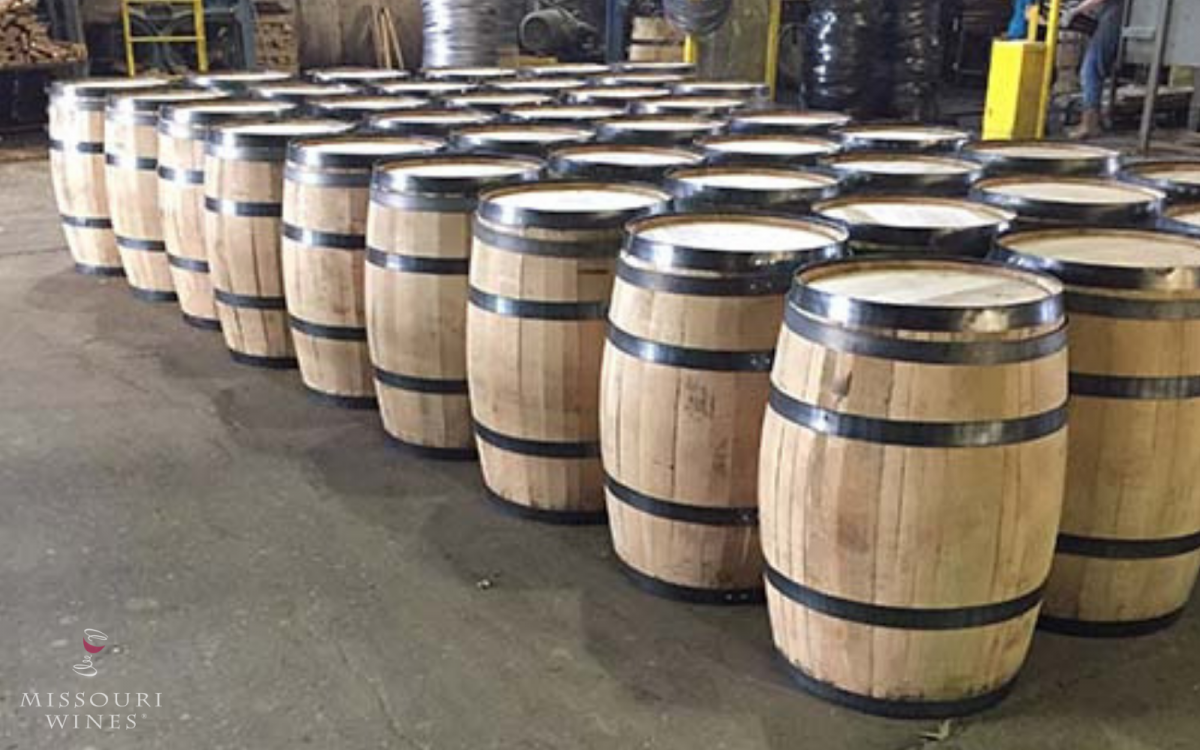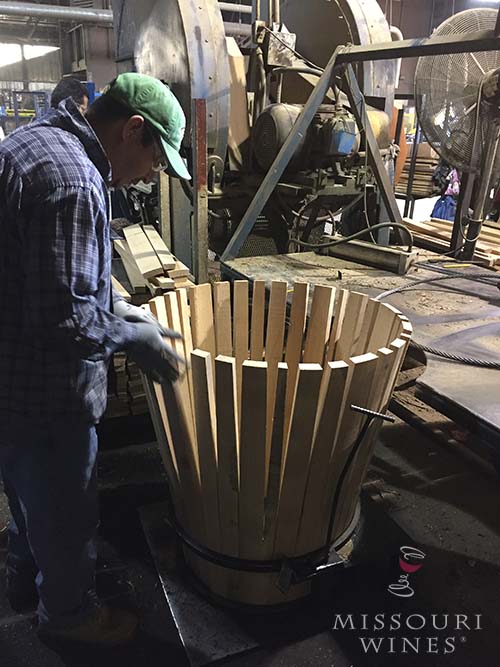November 27, 2018

Living in Missouri, we are fortunate to be surrounded by more than 130 fabulous wineries that take pride in their wine. From grapes to glass, the amount of love and time our wineries and vineyards pour into production is truly astonishing. Throughout the year, as the wineries work together to make their award-winning wines, many of their wines wouldn’t be possible without the wine barrels grapes spend the majority of their aging life in.
So, what do you know about these barrels? The wine barrels, where the wine spends years hibernating, are extremely important to the flavors these wines take on. Here are the basics of barrel manufacturing and methods that Missouri manufacturers use.
First and foremost, there are two production components for barrel manufacturers.
 (Stave pieces pictured)
(Stave pieces pictured)
 (Stave pieces being formed into barrels)
(Stave pieces being formed into barrels)
There are stave mills, which are companies that saw white oak logs into staves for barrel production, and then air dry the staves before selling them. They can also produce headings, which are the tops and bottoms of each barrel. In addition to stave mills, barrel manufacturers are called cooperages. Cooperages oftentimes purchase staves from stave mills to make the barrels. However, each manufacturer has a different process. Some cooperages do the entire process themselves, manufacturing their own staves and headings to produce their barrels from start to finish. But, what’s important to note, is that cooperages may each approach barrel manufacturing in a unique way.
Did you know that the world’s largest barrel manufacturer is located in Missouri?
Independent Stave Company (ISC) is the world’s largest barrel manufacturer and is located in Lebanon, Missouri. ISC was founded in 1912 and continues to grow its 100+ year heritage.
All barrels are made from white oak.
The white oak used to produce barrels is either European oak or American oak. Every single barrel that is made in the world comes from one of those two types of white oak.
There are two ways to test if a barrel is completely sealed.
Whether the barrel is being made to age whiskey or wine, the next step after the barrel is formed together with staves and headings is to fest the seal. There are two types of tests that can be performed. One of the ways to test the barrel is to fill the barrel with air and see if there is air seeping out from any areas of the barrel. The same type of process can be performed by filling the barrel with water. Just like the air test, if any water leaks out of the barrel, there was an issue in the creation of the barrel unit and the barrel won’t be used.
Now that you know all barrels are made from white oak and how the seals are tested, did you know there is a difference between wine and whiskey barrels?
After the barrels are created and tested for durability, depending on if the barrels are going to be used for wine or whiskey production, the next steps are very different. For our wineries, the barrels are toasted. The inside of the wine barrel is toasted and not burned. The reason for toasting wine barrels is because winemakers want the wine to take on the toasted oak flavor of the barrel. Whiskey barrels are charred. The charring (burning process) singes the inside of the barrel and gives the whiskey its brown color. This is another reason winemaker’s barrels aren’t charred – they don’t want their wine to take on the dark color.
Not only does Missouri house the largest barrel manufacturer, but ranks 2nd in the US for barrel and stave exports. We are Missouri proud and thankful for all of the barrel manufacturers and the work that they do to ensure that Missouri wineries can produce their best wines.

